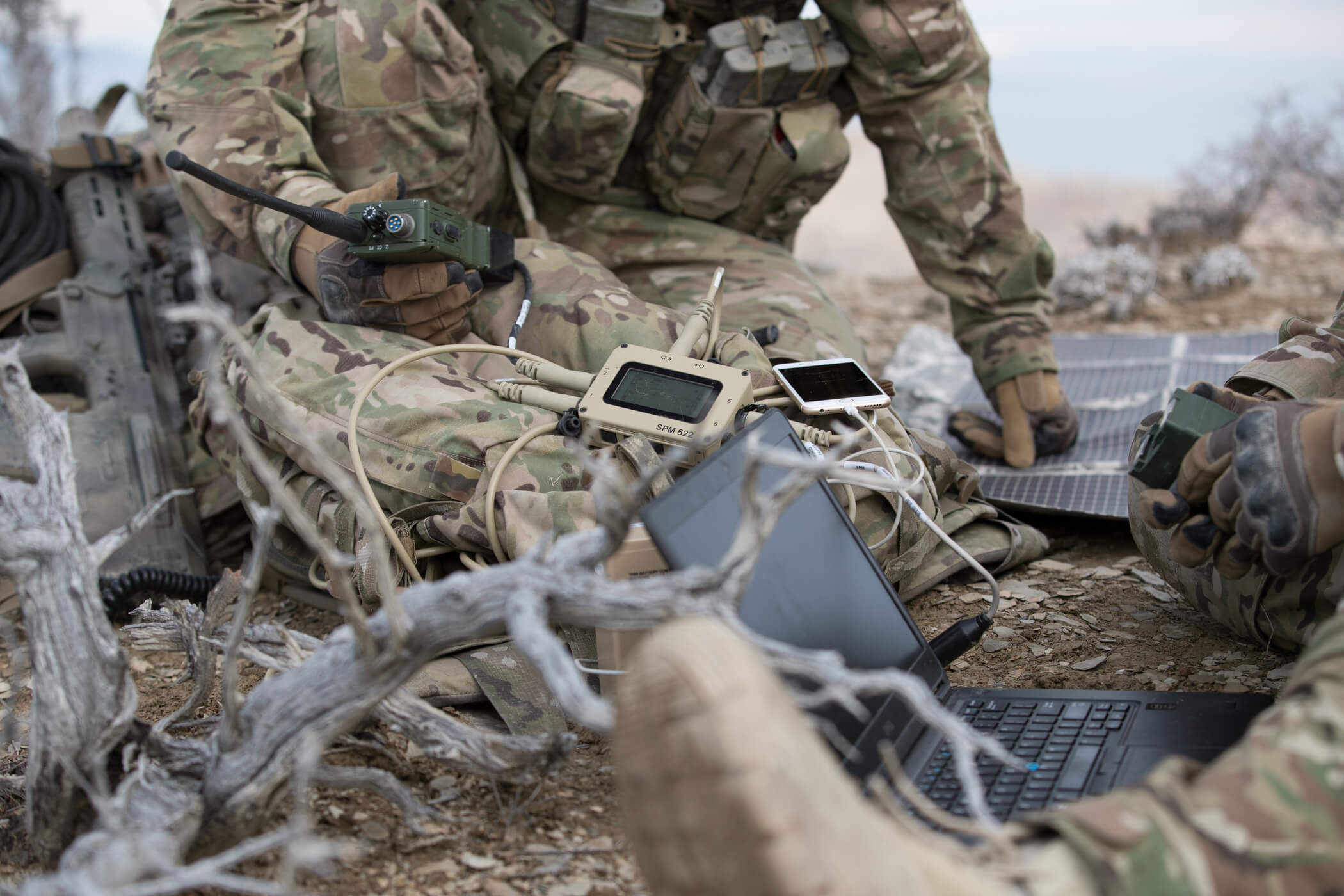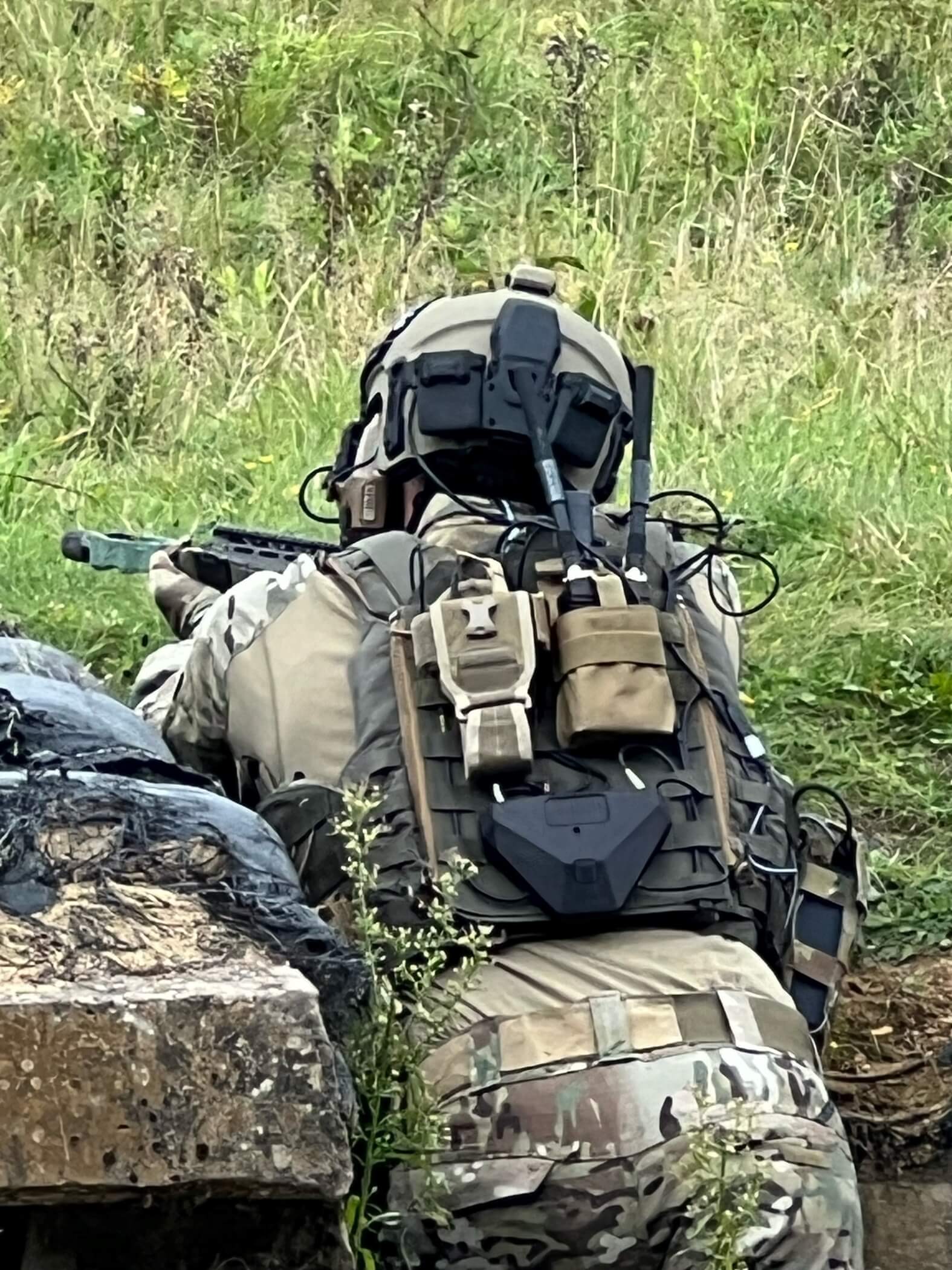Armada International Interviewed Todd Stirtzinger, CEO of Galvion, provider of helmet and power management systems at this year’s AUSA in Washington DC.
AI: Let’s start with you. How did your career lead you to Galvion?
Todd Stirtzinger: I started my career in electro optical infrared (EO/IR) delivering night vision equipment, whether it went on the tank, helicopter or the individual soldier, and have spent the past 30 years in aerospace and defence, predominantly delivering soldier equipment. After I retired, I joined Galvion’s Board of Directors for a year. At the time, founder Jonathan Blanshay was looking to grow the company and take it to the next level. In July 2023, he transitioned to the role of Executive Chairman, and I became CEO.
AI: What are Galvion’s main product lines?
TS: We have two primary product lines head systems and power and data solutions. Our helmet systems are best-in-class and fielded globally with some of the world’s most demanding military and tactical teams.
We have a framework contract with the NATO Support and Procurement Agency (NSPA) for our flagship Batlskin Caiman head system and have recently surpassed 200,000 helmets on order through that contract. We have significant orders for Norway, Sweden and Finland that we have been delivering throughout the year and will continue to supply through 2025. We can, of course, sell to any of the 33 NATO countries through this seven-year contract.
We have major programs with key countries, including Denmark, Germany, the Netherlands, the UK, among others. In July, we announced a follow-on contract from the Department of National Defence (DND) Canada for a further 8,400 Caiman helmets taking the total Canadian order to 10,500 helmets.
We’re well known for putting the human first in everything we design, whether it is what the soldier touches, wears or carries. In particular, how is the human going to interact with their equipment, and how is it going to feel and enhance their performance?
If a soldier is wearing a helmet eight hours a day, we’ve addressed the ergonomics of the helmet as it fits over the head. Stability and comfort are the two biggest considerations, and if night vision goggles are also going to be worn, that helmet has to be stable and is not a problem during the mission. We also have a padding system that we believe is second to none. It fits about 95 percent of the head shapes out there.

AI: And the other product line?
TS: We are also focused on power and data solutions. These are soldier wearable power systems. Basically, power is always a challenge on the battlefield. We offer power sources – our SoloPack batteries, that soldiers can wear, all the way through expeditionary power management systems.
Our Mission Adaptive Charging Station, or MAX-8, is a bulk charger that can charge multiple battery types at the same time. It can pull power from anywhere – AC, DC, cigarette lighter, car batteries etc. – and it adjusts the power and voltage and then charges the batteries.
We also have our Squad Power Manager, or SPM, which can scavenge from and share power to multiple devices. So, if you have a radio, a Samsung phone, a GPS device, and a car battery, and you need to manage that power while on a mission, the SPM can efficiently manage that power, using smart cables; it knows it’s plugged into the radio, and it knows what kind of voltage the radio needs. In addition, there is the ability to prioritize what you want to charge – communications are critical on mission, so radio might be prioritized, followed by my GPS, phone, etc.
We just received orders from the U.S. Army’s Joint Program Executive Office to supply our MAX-8 and SPM for the Chemical, Biological, Radiological and Nuclear Defense (JPEO-CBRND) dismounted reconnaissance sets, kits, and outfits (DRSKO) program of record.
A few months ago, the Marine Corps also placed an order for over 5,000 of our SoloPack II, a robust li-ion rechargeable battery. Someone operating in an expeditionary context might carry two of our SoloPack batteries, depending on mission length and power needs. Our original – SoloPack offers 98-watt hours, while the SoloPack II offers 140-watt hours.

AI: So what is the next step for Galvion in its product development?
Of course we will expand our product offerings across our core categories, but we are focusing heavily on capability expansion, with particular attention on integration across head and torso systems, and with peripheral equipment. If you think about the trends, the soldier is becoming a node on the battlefield; how much information can we get them, at the right time, in the right place, and in a way that does not lead to cognitive overload. That’s critically important. How can we take all of the information, process it, and present it in a heads-up display, for maximum situational awareness, and mission effectiveness. That’s where it’s going, and we’re ideally positioned to design and deliver these next-generation solutions, sooner than most think. We’re leveraging our expertise in head systems, power and data management, and software development and working with tier 1 customers to imagine the integrated systems of the future, today.
We focus on these future systems under the umbrella of our Advanced Capabilities division. We’re working on development projects with specialist forces on both sides of the Atlantic that demonstrate visions of the integrated soldier. These systems include computing on the head, managed power and data through powerful hub, integration with smartphones, smartwatch, drones, weapons site, GPS, all with an emphasis on open architecture. Really exciting stuff.

AI: In terms of market and customer base, which militaries are at the stage where they can think of getting this kind of technology. Is the customer potential limited in any way?
TS: You would think that, but we’ve gone to great lengths to make sure that the products that we’re developing are not subject to ITAR [International Traffic in Arms Regulations]. Because we’re using a lot of commercial technology, which is then hardened for military use, the technology is not a limiting factor. Regarding markets, we’re very big in Europe with over 1.5 million helmets delivered there. Of course, North America is a prime market for us as well, and we continue to supply into the Middle East, because of what’s going on there. We see potential across all the global markets and are focusing on expansion in some key regions in the coming years.
We are also getting ready to open a facility in Gdansk, Poland which is going to be our European hub. We’re just waiting for the last permit and then we should be producing helmets out of that facility in early in 2025, and it will become a major repair and support hub.














